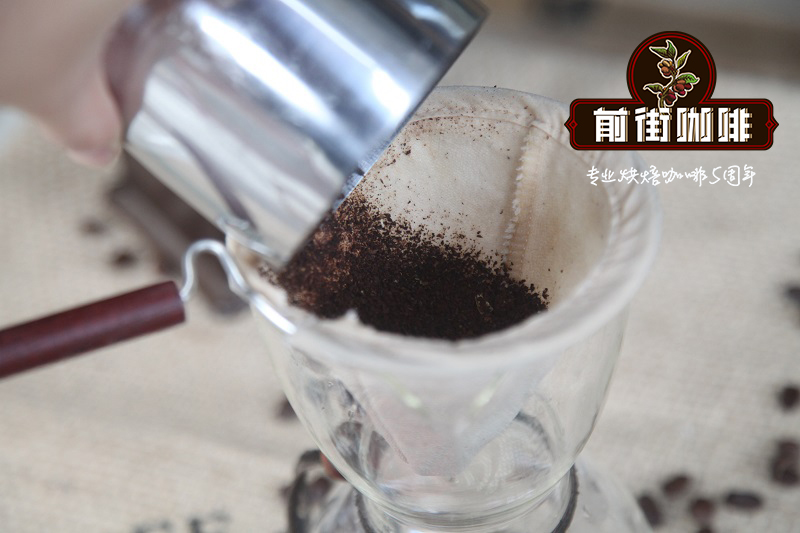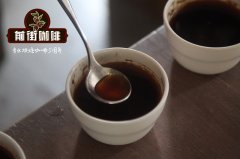What is the grading system for Ivorian coffee? What is the variety of coffee grown in C ô te d'Ivoire?

Professional coffee knowledge exchange more coffee bean information please follow the coffee workshop (Wechat official account cafe_style)
C ô te d'Ivoire is the world's 83rd largest export economy. In 2016, C ô te d'Ivoire exported US $10.3 billion and imported US $815 million, with a trade surplus of US $211 million. In 2016, C ô te d'Ivoire 's gross domestic product (GDP) was US $36.4 billion and per capita GDP was US $36900.
Coffee production in C ô te d'Ivoire is very important to the country's economy because coffee is the country's second largest export. It was the largest coffee producer in Africa in the 1970s and 1980s and one of the largest Robusta producers in the world. Today, however, coffee production in C ô te d'Ivoire has far surpassed that of Vietnam and Brazil. It only ranks 12th in the world rankings.
French colonists introduced coffee plants to the country in the 19th century. Following World War II, coffee production will increase from 36000 to 112500 tons in 1945 and 1958 after C ô te d'Ivoire became independent (1960). Coffee production peaked in the 1970s, making it the third largest coffee producing country in the world. unstable training before the civil war after Brazil and Colombia. Coffee production and policy originated from the time when C ô te d'Ivoire was a colony of French West Africa. This has attracted French companies to invest in the industry.
C ô te d'Ivoire is the world's largest cocoa exporter and the industry is crucial as a source of income for the military and civil servants. Ouattara called for a ban on cocoa coffee exports in January 2011 to reduce funding to Gbagbo and force him to relinquish power.
C ô te d'Ivoire
The west coast of Africa is located in the Republic of C ô te d'Ivoire. This small country has a fairly large coffee industry, but it is relatively rare in the market.
After the second World War, the local coffee economy experienced a great prosperity. In the 1970s, C ô te d'Ivoire was the world's third largest exporter of coffee and, in a very short time, the largest producer of robusta coffee. By 2000, however, the coffee industry had lost some momentum due to political unrest and civil war. Even happier, the current stable government expects the industry to grow by 400 per cent by 2020.
Since almost all grown coffee is robusta coffee, typical flavor features include dark notes of chocolate, nuts, earth and spices, as well as unique strong bitterness.
The common treatment of Ivorian coffee is washing and insolation.
Classification of Ivorian coffee:
1) Analysis:
It includes homogenizing batches by removing the most significant defects.
As a defect, we note that:
Dry damaged beans
Black bean
Cherry fruit
Sheepskin paper bean
Crushing
Shell
Unwanted beans
Wait.
For the analysis of coffee, weight:
First class 360 grams (G 1)
Class II 300 g (G 2)
Class III 230 g (G 3)
180 grams of level 4 (G 4)
100 grams is broken.
Regardless of the grade, beans weighing more than 100 grams are used to grade batches.
According to the results of the analysis, the following categories can be obtained:
When there are more than 60 defects, the batch is said to be larger
When the analysis results show defects between 61 and 90, the batch is classified as current
When there are more than 91 defects, many people are considered non-compliant.
Crop year: current year
Maturity: good fermentation
Style: dry
Type of cultivation: common
Processing type: sun-dried, peel dry
Water content: less than or equal to 13% tasteless
Foreign body: up to 0.5%
Crushing: up to 2%
Black beans: up to 2%
Free of insects and spots.
2) Calibration:
After analysis, an automatic calibrator is used for calibration. According to the mesh of the sieve, there are five caliber:
Caliber 18
Caliber 16
Caliber 14
Caliber 12
Caliber 10
After sizing, the grade of the batch is determined after weighing the beans retained in each sieve according to the number of beans retained in the sieve. We have grades:
All beans should be kept in the sieve corresponding to the grade.
3) Grade:
-Grade 1 (Extra-prima):
1). Minimum 80% by weight retention on a standard test sieve with round holes of 7.14mm (No.18 standard test sieve of ISO)
2). Minimum 94% by weight retention on a standard test sieve with round holes of 6.35mm (No.16 standard test sieve of ISO)
3). Minimum 99% by weight retention on a standard test sieve with round holes of 5.56mm (No.14 standard test sieve of ISO)
-level 2 (primary): 1). At least 80% weight is retained on the standard test screen, and the round hole is 6.53mm (ISO standard test screen 16) 2). Retain at least 94% weight of 5.56mm round hole screen (ISO standard test screen 14) 3) in the standard test. Standard test screen retains a minimum weight of 99%, round hole 4.76mm (ISO standard test screen 12)-grade 3 (excellent): 1). At least 80% weight is retained on the standard test screen, and the round hole is 6.56mm (ISO standard test screen 14) 2). Holes in the standard test sieve with a minimum weight of 94% 4.76mm (ISO standard test sieve 12)
3). Retain at least 99% weight on a standard test screen with 3.97mm round holes (ISO standard test sieve 10)
-level 4 (normal):
1). Keep at least 80% weight round hole 4.76mm sieve in the standard test (ISO standard test sieve 12)
2). Keep at least 94% on the standard test screen with round holes of 3.97mm (ISO standard test screen)
4) Classification:
Category 5 (5)
1-Excellence
2-additional primaries
3-Junior
4-Advanced
5-current
Qianjie coffee: Guangzhou bakery, the store is small but a variety of beans, you can find a variety of unknown beans, but also provide online store services. Https://shop104210103.taobao.com
Important Notice :
前街咖啡 FrontStreet Coffee has moved to new addredd:
FrontStreet Coffee Address: 315,Donghua East Road,GuangZhou
Tel:020 38364473
- Prev

Does Ivory Coast produce coffee? How is coffee production in C ô te d'Ivoire / Ivory Coast?
For more information on coffee beans, please follow the coffee workshop (official Wechat account cafe_style). In terms of quantity, C ô te d'Ivoire is one of the largest producers in the world. But the best quality coffee has never been produced here, and the coffee rarely comes from Arabian coffee trees. In the early 1980s, it was the third largest coffee producer in the world.
- Next

What is the method of handling Ivorian coffee? Flavor characteristics of Ivorian Coffee
Professional coffee knowledge exchange more coffee bean information please follow the coffee workshop (Wechat official account cafe_style) the west coast of Africa is located in the Republic of C ô te d'Ivoire (C ô te d'Ivoire). This small country has a fairly large coffee industry, although you are unlikely to find beans in specialty coffee shops, mainly Ivorian coffee, mainly lower production grade Robusta beans, recently.
Related
- What documents do you need to go through to open a coffee shop? coffee shop coffee shop certificate processing process
- How to purchase Coffee beans in small Cafe how to choose a suitable supplier for domestic Coffee supply Company
- How to drink Starbucks Fragrance White Coffee? how to make Australian White Coffee? what Italian coffee beans are recommended?
- The Story of Flora Coffee: the name of Flora Coffee Bean and the implication of the Flowers on Florna Coffee
- How much does a cup of coffee cost? How much is the profit of a cup of coffee? What is the profit of the coffee shop in a year?
- Yunnan small Coffee, known as "fragrant Coffee", introduces the characteristics of Alpine Arabica Coffee producing areas in Yunnan, China
- 2023 latest Starbucks full menu price list how much is a cup of Starbucks coffee what is better to drink the most popular hot and cold drinks recommended
- Starbucks different kinds of Coffee Price list Starbucks menu 2023 Top Ten Best drinks in Starbucks
- Starbucks Spring praise Comprehensive matching Coffee Bean theme Story Packaging implication and taste description
- The cost of a cup of coffee latte American coffee cost price and selling price

